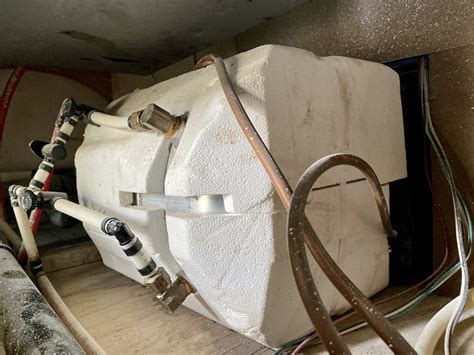Fix Low Water Pressure: RV Pump Priming – A Comprehensive Guide
Low water pressure in your RV can quickly turn a relaxing getaway into a frustrating experience. One of the most common causes is a problem with your RV's water pump priming. This comprehensive guide will walk you through understanding the issue, troubleshooting the problem, and getting your water flowing at full pressure again.
What is RV Pump Priming?
Before diving into solutions, let's understand what pump priming actually means. Your RV's water pump is designed to pull water from your fresh water tank and push it to your faucets and other water fixtures. This process requires the pump to create a vacuum to suck the water in. If air gets into the lines, the pump can't create this vacuum, leading to low or no water pressure. Priming simply means getting rid of this trapped air and allowing the pump to pull water effectively.
Why is My RV Water Pump Not Priming?
Several factors can prevent your RV water pump from priming correctly. Let's explore the most common culprits:
1. Air in the Lines: The Most Common Culprit
This is the most frequent cause of low water pressure. Air pockets interrupt the water flow, preventing the pump from doing its job. This can happen after draining your tank, disconnecting water lines, or simply due to leaks.
2. Low Water Level in the Fresh Water Tank
Seems obvious, but surprisingly often overlooked! Ensure your fresh water tank has enough water for the pump to draw from. A low level will result in the pump sucking air instead of water.
3. Faulty Water Pump
While less common than air in the lines, a malfunctioning water pump can also be the problem. This might involve a worn-out impeller, a damaged motor, or other internal issues.
4. Clogged Water Lines
Sediment, mineral buildup, or debris can restrict water flow, mimicking the symptoms of a priming problem. A clogged line prevents the pump from easily drawing water, leading to low pressure.
5. Leaky Fittings or Connections
Leaks anywhere in the water system can introduce air into the lines, disrupting the priming process. Check all connections for tightness and leaks.
How to Fix Low Water Pressure Due to RV Pump Priming Issues
Now that we've identified potential problems, let's tackle how to fix them:
1. Check the Water Level in Your Fresh Water Tank
This is the first and easiest step. Make sure your tank is sufficiently full.
2. Manually Prime the Pump (If Your Model Allows)
Many RV water pumps have a built-in priming mechanism. Consult your owner's manual for instructions on how to manually prime your specific pump. This often involves pressing a button or switch several times.
3. Bleed the Air from the Lines
This involves opening faucets throughout your RV, starting with the ones furthest from the water pump. Run each faucet for several seconds to allow air to escape. Close the faucet and move to the next one, repeating the process until water flows consistently from all faucets.
4. Check for Leaks
Carefully inspect all water lines, connections, and fittings for any leaks. Tighten loose connections and repair or replace any damaged components.
5. Inspect the Water Pump
If manual priming and bleeding the lines doesn't resolve the issue, the water pump itself might be faulty. You may need to consult an RV repair professional or replace the pump.
6. Flush Your Water Lines
If you suspect sediment buildup, consider flushing your water lines. This can be done by connecting a garden hose to the city water inlet and running water through the system for several minutes.
Troubleshooting: Why is My Pump Running But No Water is Coming Out?
Even with the pump running, no water might flow if air is still trapped in the lines or there's a more serious problem. Try bleeding the lines again, check for leaks, and ensure the water tank is sufficiently full. If the problem persists, it's time to call a professional for further diagnosis.
How Often Should I Prime My RV Water Pump?
Regular priming isn't usually necessary unless you've recently drained your tank, disconnected water lines, or experienced a noticeable drop in water pressure.
By systematically following these steps, you can effectively troubleshoot and resolve low water pressure issues related to RV pump priming, ensuring a more enjoyable RV experience. Remember, consulting your RV owner's manual is always recommended for specific instructions related to your model.

